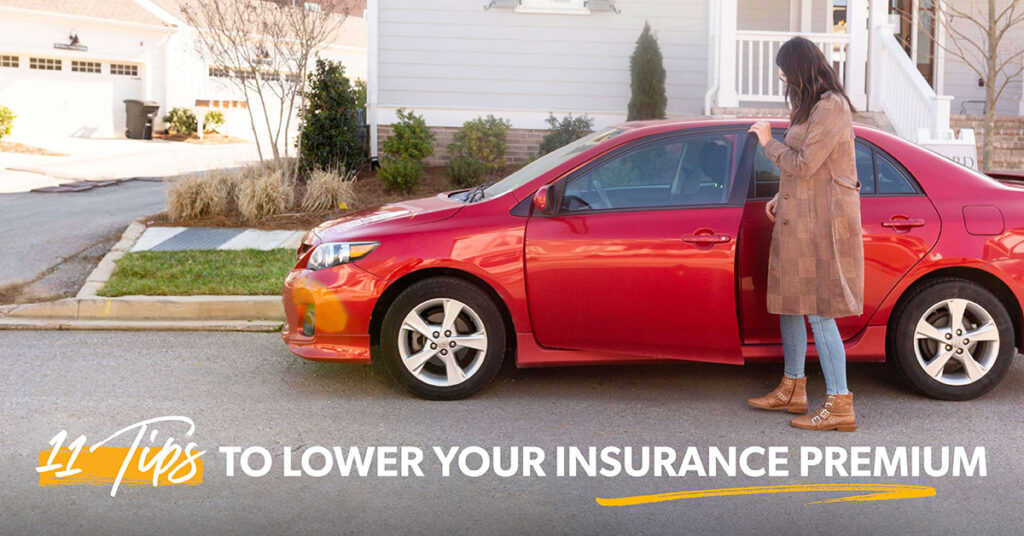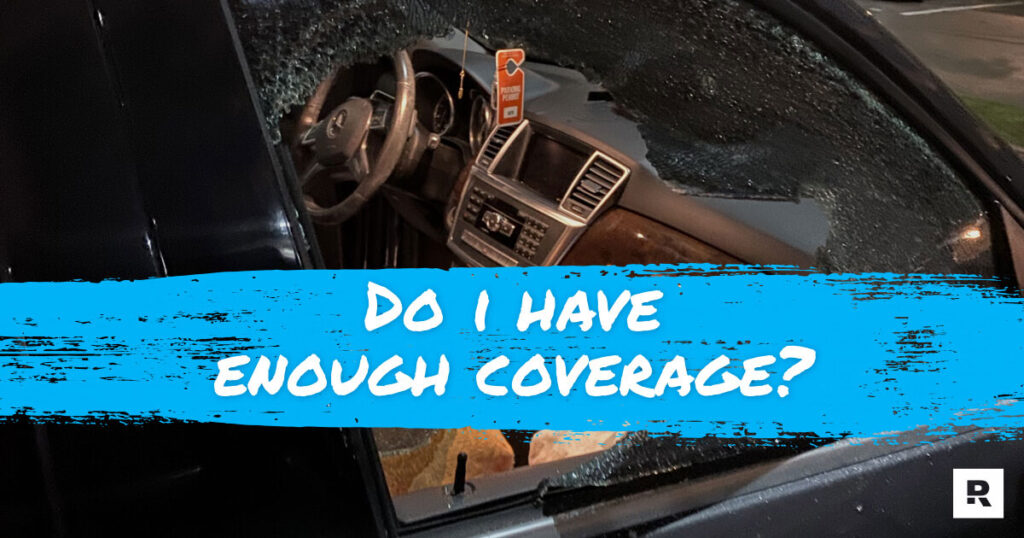How to Save on Car Insurance: 11 Ways to Lower Your Rate | RamseySolutions.com

We love car insurance! It protects you—not to mention your car, passengers and even other drivers—on the road. But we hate how much that protection costs . . . and we know you do too.
That’s why we’re sharing our favorite tips for how to lower car insurance costs. We’ll start by taking a look at the real cost of car insurance. Then we’ll dive into how you can save.
How Much Does Car Insurance Cost?
Unfortunately, car insurance isn’t getting any cheaper. In 2020, the average driver paid $1,202 for car insurance.1 Yikes!
There are a lot of reasons your car insurance is so expensive. You can’t control all of them—like state laws or your age. But you can take steps to lower your car insurance.
1. Ask for a discount.
If you want a better rate, ask for one! Car insurance companies offer dozens of discounts—and you probably qualify for at least a few.
You can get discounts for:
And that’s just for starters! Ask your insurance company what discounts you can get.
2. Shop around.
You’re not married to your car insurance policy. Translation: If you don’t like the rate your insurer charges, see what else is out there.
You may save money by switching car insurance companies. Or your current company may be willing to price match a better offer to keep your business. (They may even throw in a loyalty discount to thank you for sticking with them.)
Some people don’t want to shop for better car insurance because they don’t know how. Or they don’t want to spend hours comparing quotes. That’s why we tell our fans to work with an independent insurance agent. They’ll shop around for you. It doesn’t get any easier than that!
3. Increase your deductible.
Your deductible is what you pay before your insurance kicks in. So, let’s say you get in an accident and the repairs will cost $2,500. If you have a $500 deductible, you’ll pay $500. Then the insurance company will pay $2,000.
Most people choose a low deductible because they’re thinking of big repair bills after an accident. But they’re not thinking about the insurance premiums they’ll pay every month.
If you choose a low deductible, your insurer will jack up your monthly rates to offset the risk of paying more to fix your car. Raising your deductible to $1,000 could save you 40% (or even more) on your premiums.2 If you pay average insurance rates, that’s up to $480 a year. Nice!
We recommend saving up a beginner emergency fund of $1,000 or a sinking fund so you can afford that higher deductible and enjoy lower premiums.
4. Drop coverage you don’t need.
Beware of unnecessary car insurance like GAP or premium coverage. These add-ons up your rates, but they don’t offer any more value than a good full coverage policy can give you.
You may also be able to drop collision and comprehensive coverage if your car is paid off or you have enough money in the bank to replace it. (If your car is over 10 years old, some insurers won’t offer you these coverages anyway, because of its decreased value.)
With all that said, the one thing you should never cut back on is liability insurance.
Repair and medical bills can cost hundreds of thousands of dollars after an accident. And if that’s more than your insurance policy covers? You’re legally required to pay the rest. (Yeah, that’s a big problem.)
That’s why we recommend carrying at least $500,000 in liability insurance—so you’re actually protected. The good news is, liability is super cheap. So even if it affects your rate a little, you can offset the cost by cutting back on those other types of coverage that you don’t need.
5. Buy an insurance-friendly vehicle.
A lot of folks get so caught up in the bells and whistles of a new car that they forget how much it will cost to insure. Don’t make that mistake! Since new cars are more expensive to repair and replace, they’ll make your insurance premiums skyrocket.
So instead of a brand-new car, consider buying a used vehicle that’s 4–10 years old. (Hey, if used cars are good enough for the 10,000 millionaires we surveyed, they’re good enough for you.)
You can find plenty of reliable used vehicles that look new—so you can still look good on the road while you save money.
Buying a smaller car? You’ll see even bigger savings. That’s because smaller cars are simpler and cheaper to repair than big hulking vehicles. So if your SUV or pickup truck is just a gas-guzzling status symbol that you don’t actually need, swap it out for a sedan.
And before you buy, call your insurance company. They can tell you how the car you’re considering will affect your rates. If you don’t like what you hear, you can choose a different vehicle.
6. Change how you pay your premiums.
Insurance companies love when you make their job easier, and they’ll thank you with discounts and lower premiums. One way to do that is to change how (and when) you pay for your insurance.
For example, you can:
7. Be a better driver.
We’re big believers in controlling the controllables, and this is one you can definitely control. If you drive like an idiot, you’re going to pay more for insurance. (You should pay more because you’re creating unnecessary risks for yourself and others on the road.)
So if you want to know how to lower your car insurance, you can start by looking in the mirror. Like our friend Dave says, “If you’re part of the problem, you can be the solution!”
Follow the rules of the road and pay attention to what’s going on around you. As you cut down on the number of traffic violations you make, you’ll cut down your car insurance costs too. And if you’re really serious about lowering your rates, you can go the extra mile and take a defensive driving course.
8. Bundle your policies.
Own multiple cars? A car and a house? Adding a boat to the mix? Any insurer worth their salt will lower your premiums if you carry multiple policies under their roof.
Bundling those policies together can be a quick way to save money (usually around 15%) on your insurance bill without breaking a sweat.3 Plus, it cuts way down on the amount of paperwork you have to keep track of and insurance companies you have to deal with. That’s a win in our book!
9. Review your coverage.
It’s amazing how many people are overpaying for coverage because their “teen driver” is still on their policy . . . even though their “teen” is now 30 years old and has a car insurance policy of their own.
Or maybe you didn’t update your insurance after you moved into a new neighborhood, sold a vehicle, or got married.
Updating the info on your policy can lower your car insurance a ton. Check your coverage at least once a year (or anytime you go through a major life change) to make sure your policy is up to date.
10. Stop worrying about your stupid credit score.
You’ve probably heard that you can get a better rate on car insurance if you improve your credit score. And that may be true with some insurers. But here’s the thing . . . Credit scores are bogus! They’re totally made up, and the sad thing is, the financial industry has convinced people that these made-up numbers matter.
In reality, your credit score is just an “I love debt” score. It’s based on how much debt you have, how long you’ve been in debt, what type of debt you have and whether you’ve made your payments on time.
So let’s think about this again . . . When someone tells you that you should build your credit to save on car insurance, they’re really telling you to take on more debt, pay more money in interest and tie up more of your income in monthly payments. That’s stupid!
You know what works better? Paying off your debt. When you don’t have any minimum payments or interest to worry about, all your income goes into your pocket—and you can afford any car insurance you want.
Oh, and that credit score you used to be so worried about? You’ll see pretty quickly that you can live without it. (In fact, we’d be willing to bet you’ll be happier.)
11. Bring in the big guns.
There are dozens of ways to lower car insurance costs. But it can be hard to figure out which ones will save you the most money.
Should you bundle policies, switch insurance companies or both? Which discounts are best for you? What’s the right deductible—or for that matter, the right coverage—for your car?
Trying to figure out how to lower car insurance costs on your own can get overwhelming. That’s why we created a network of top-rated, independent insurance agents to do the hard work for you.
These guys and gals are the best in the business. They’ll shop around with multiple carriers to get you the best deal on the coverage you need—so you finally have somebody in your corner. And since they have the hearts of teachers, they’ll help you actually understand your car insurance.
When you’re working hard to save money, there’s no shame in asking for help. In fact, it’s smarter. Our pros are ready and waiting to help you get the right coverage at the right price.
This content was originally published here.




Responses